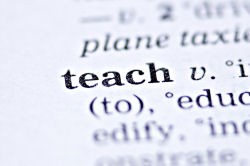Discovering Mathematics, I can honestly say, has been brilliant. Intriguing, eye-opening, shocking. It has left me sad it has reached an end, but I am 100% certain when I say that this is most definitely not where my new-found love for maths ends.
Where to start?
I selected ‘Discovering Mathematics’ as my elective module for MA2 and at the time, admittedly, I was not completely certain of what to expect to take from it. I knew it would entail learning about approaches towards learning mathematics and so this was an automatic go-to.
From the first introductory class we had, I thought to myself ‘yes, this is a good choice, I’m going to learn a lot’ and I was right!
Goodbye maths anxiety!
‘Maths anxiety’ is something I learned about in the module and, unbeknown to its title and ‘diagnosis’ if you like, experienced myself prior to the module. All thanks to the tutors who ran the inputs for the module, my lack of confidence in maths quickly banished and went to the back of my mind. Rather than dreading maths, I started to really look forward to the next maths input. I can confirm this was due to the tutors’ own love for learning maths which was an inspiring attitude that brushed off on me. Admittedly, there are still areas of maths I am not so confident in, as I am not qualified in the subject at a too-impressive level. However, the module has made me experience a sense of confidence in findings out things I did not know about in maths and question things upon professional and personal reflection.
Discovering Mathematics – Mathematics, you have been discovered
In summary, I mean what it says in the title. I would recommend this module highly as an elective choice for any MA Education students who have the option to look into choosing this. It’s a real eye-opener to ways of learning and approaches to methodology in teaching mathematics, which was not my strong point in professional practice. Now I am more keen than ever before to develop my maths practice in schools.
What’s next?
There are many thing I’ve learned about throughout this module which I would not have thought twice about in terms of making connections to mathematical concepts. For example, maths and dance, maths in nature and really, honestly, the fact maths is everywhere. It has changed my perspective of maths to one that it determined to explore maths further because now I know there is no escaping maths – it is in almost everything we do! Not only this, but I am driven to change people’s perceptions of maths – especially the way it is approached in schools. Let’s abolish the ‘rote-learning’ attitude and get adventurous!
Now Discovering Mathematics if finished, I think it’s time to go and eat some Christmas π.
… Sorry, I couldn’t resist.




